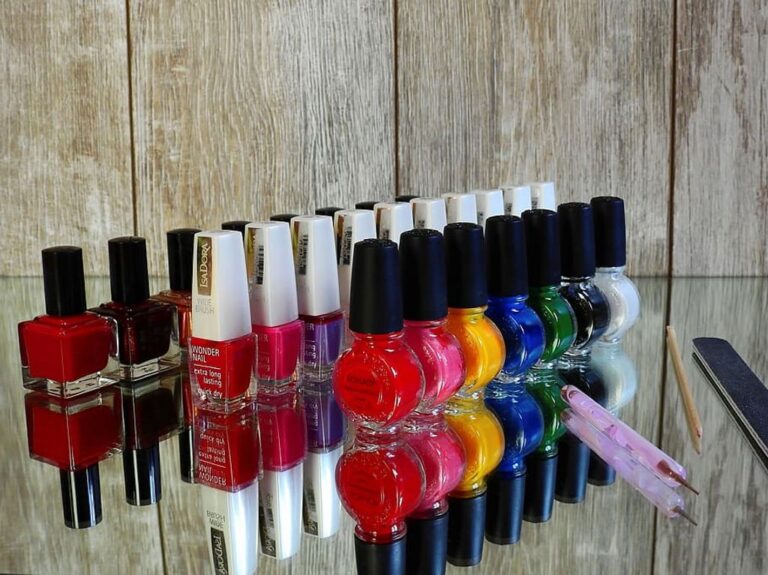“Oil Absorption: Can Nails Absorb Oil?”
In the world of nail care, the topic of oil absorption in nails has sparked curiosity and interest. Understanding how nails interact with and absorb oil is essential for developing effective nail treatments and maintaining nail health. This article explores the structure of nails, the role of keratin in oil absorption, factors affecting oil absorption, methods for testing oil absorption, and applications of oil absorption in nail care.
Key Takeaways
- Nails have a porous structure that allows them to absorb oil, which can impact their overall health and appearance.
- Keratin, the main protein in nails, plays a significant role in oil absorption and retention.
- Nail porosity, influenced by factors such as hydration and damage, affects the rate and extent of oil absorption.
- Environmental conditions, including temperature and humidity, can influence the oil absorption behavior of nails.
- Gravimetric method and spectroscopic analysis are commonly used techniques for quantifying oil absorption in nails.
Understanding Oil Absorption in Nails

The Structure of Nails
The human nail is a complex structure designed to protect the distal phalanx, the fingertip, and the surrounding soft tissues. It is composed primarily of a hard, protective protein called keratin. This protein is also found in the skin and hair, which indicates a shared role in the body’s protective barrier systems. Nails themselves are made up of several parts:
- The nail plate, which is the hard and translucent part of the nail, made of layered keratin.
- The nail bed, which is the skin beneath the nail plate that nourishes and supports it.
- The cuticle, which is the tissue that overlaps the nail plate at the base of the nail.
- The nail matrix, where nail growth originates, often referred to as the nail root.
Each of these components plays a crucial role in the overall health and functionality of the nail. The nail bed, for instance, contains blood vessels, nerves, and melanocytes that produce melanin, which can influence the appearance of the nail. It is also the area where oils can penetrate, strengthening the structure and promoting a healthier foundation for nail growth.
Tip: Regular maintenance and care of each part of the nail structure are essential for preventing damage and maintaining nail health.
The Role of Keratin in Oil Absorption
Keratin, a fibrous structural protein, is the primary component of nails. Its intricate structure is responsible for the nail’s strength and resilience. When considering oil absorption, keratin’s role is pivotal as it determines how oils interact with the nail’s surface. The presence of keratin in nails creates a semi-permeable barrier that can selectively absorb substances, including oils.
The absorption process is influenced by the porosity of the nail, which is a direct consequence of the keratin’s arrangement. Oils with smaller molecular structures tend to penetrate more easily, nourishing the nail from within. Conversely, larger molecules may only coat the surface, providing a temporary barrier against moisture loss.
- To enhance oil absorption, it is advisable to apply oils when nails are clean and free from polish.
- Regular use of nourishing oils can improve the flexibility and overall health of the nails.
Remember, while keratin allows for some degree of oil absorption, not all oils are equally beneficial. Selecting the right oil for your nail type is crucial for achieving the desired results.
Factors Affecting Oil Absorption

Nail Porosity
The porosity of nails is a critical factor in determining their ability to absorb oils. Nails with higher porosity have more microscopic spaces or pores, which allow for easier penetration and retention of oils. Conversely, nails with low porosity are denser and less permeable, making oil absorption more challenging.
Factors that influence nail porosity include genetics, health, and external damage. For instance, frequent exposure to water or harsh chemicals can increase porosity by creating microscopic damages to the nail structure. It’s important to consider the porosity of your nails when selecting nail care products. Lightweight oils like jojoba or grapeseed are often recommended for low porosity nails as they are less likely to weigh the nails down or leave a greasy residue.
Tip: To maintain optimal nail health and appearance, choose oils and nail care treatments that are compatible with your nail’s porosity level.
Environmental Conditions
Environmental conditions play a significant role in the oil absorption capacity of nails. Humidity and temperature can impact the rate at which nails absorb oil. Higher humidity levels may lead to increased oil absorption, while extreme temperatures can affect the overall absorption process. It’s important to consider these environmental factors when evaluating oil absorption in nails. Additionally, variations in environmental conditions can influence the effectiveness of oil-infused nail treatments and their long-term effects on nail health.
Methods for Testing Oil Absorption
Gravimetric Method
The Gravimetric Method is a precise technique for quantifying oil absorption in nails. It involves weighing the nail sample before and after exposure to oil, allowing for the calculation of oil absorption capacity. This method provides structured, quantitative data that is essential for understanding the oil absorption properties of nails. Here’s a simple example of how the Gravimetric Method is applied:
| Sample | Initial Weight (g) | Final Weight (g) | Oil Absorbed (g) |
|---|---|---|---|
| 1 | 2.5 | 3.2 | 0.7 |
| 2 | 2.8 | 3.6 | 0.8 |
This method is invaluable for researchers and nail care professionals seeking precise data on oil absorption. It allows for accurate comparisons between different nail treatments and environmental conditions, leading to informed decisions for nail care and treatment strategies.
Spectroscopic Analysis
Spectroscopic analysis is a sophisticated technique that provides insights into the chemical composition and interactions within the nail. By analyzing the light absorbed or emitted by a substance, this method can detect the presence and concentration of oils in the nail structure.
The process typically involves the following steps:
- Preparing the nail sample by cleaning and cutting it to a suitable size.
- Exposing the sample to a light source and measuring the spectrum of absorbed or emitted light.
- Interpreting the spectral data to identify specific oil compounds.
- Quantifying the oil content based on the intensity of the spectral lines.
This technique is particularly useful for understanding the molecular dynamics of oil absorption and can reveal how different oils interact with the keratin fibers in the nail.
Tip: Consistent sample preparation is crucial for accurate spectroscopic analysis. Variations in sample handling can lead to discrepancies in the results.
Applications of Oil Absorption in Nail Care

Oil-Infused Nail Treatments
Oil-infused nail treatments provide a nourishing and hydrating solution for dry and brittle nails. These treatments are formulated with a blend of essential oils and vitamins to promote nail strength and flexibility. The use of cuticle oil in nail treatments helps to moisturize and protect the nail bed, resulting in healthier and more resilient nails. Additionally, some oil-infused treatments may contain natural extracts known for their nail-strengthening properties.
- Implement a table for presenting structured, quantitative data. Ensure it’s succinct and formatted correctly in Markdown.
When using oil-infused nail treatments, it’s important to apply the oil to the cuticles and nails, gently massaging it in for better absorption and effectiveness.
Effects of Oil Absorption on Nail Health
Oil absorption in nails plays a crucial role in maintaining nail health. The ability of nails to absorb oil affects their flexibility, strength, and overall condition. Proper oil absorption can prevent dryness and brittleness, leading to healthier and more resilient nails. Additionally, it can contribute to the effectiveness of oil-infused nail treatments and the overall success of nail care routines. Understanding the impact of oil absorption on nail health is essential for achieving optimal nail care results.
Oil absorption plays a crucial role in nail care, offering a range of applications that contribute to the health and beauty of nails. From cuticle hydration to strengthening nail beds, the use of oils in nail care has become an essential practice for maintaining strong, healthy nails. At NAILinspire.com, we are dedicated to providing the ultimate online nail art design library, where you can explore a wide variety of nail care techniques, including the benefits of oil absorption. Visit NAILinspire.com today to discover the latest trends in nail care and unleash your creativity with our inspiring nail art designs.
Frequently Asked Questions
Can nails absorb oil?
Yes, nails have the ability to absorb oil, although the extent of absorption may vary based on factors such as nail porosity and environmental conditions.
How does the structure of nails affect oil absorption?
The structure of nails, particularly the presence of keratin, plays a significant role in oil absorption. Keratin is a protein that can interact with and retain oil.
What is nail porosity and how does it affect oil absorption?
Nail porosity refers to the degree to which nails can absorb liquids. Higher porosity allows for greater oil absorption, while lower porosity limits absorption.
What environmental conditions affect oil absorption in nails?
Environmental factors such as humidity, temperature, and exposure to water can influence the rate and extent of oil absorption in nails.
What is the gravimetric method for testing oil absorption in nails?
The gravimetric method involves measuring the weight change of nails before and after exposure to oil, providing a quantitative assessment of oil absorption.
How can oil-infused nail treatments benefit nail health?
Oil-infused nail treatments can nourish and moisturize the nails, improving flexibility and strength while reducing the risk of breakage and brittleness.







